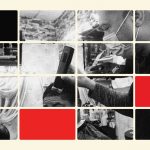For decades now, gay men have been barred from giving blood. In 2015, what had been a lifetime ban was loosened, such that gay men could be donors if they’d abstained from sex for at least a year. This was later shortened to three months. Last week, the FDA put out a new and more inclusive plan: Sexually active gay and bisexual people would be permitted to donate so long as they have not recently engaged in anal sex with new or multiple partners. Assistant Secretary for Health Rachel Levine, the first Senate-confirmed transgender official in the U.S., issued a statement commending the proposal for “advancing equity.” It “treats everyone the same,” she said, “regardless of gender and sexual orientation.”
As a member of the small but honorable league of gay pathologists, I’m affected by these proposed policy changes more than most Americans. I’m subject to restrictions on giving blood, and I’ve also been responsible for monitoring the complications that can arise from transfusions of infected blood. I am quite concerned about HIV, given that men who have sex with men are at much greater risk of contracting the virus than members of other groups. But it’s not the blood-borne illness that I, as a doctor, fear most. Common bacteria lead to far more transfusion-transmitted infections in the U.S. than any virus does, and most of those produce severe or fatal illness. The risk from viruses is extraordinarily low—there hasn’t been a single reported case of transfusion-associated HIV in the U.S. since 2008—because laboratories now use highly accurate tests to screen all donors and ensure the safety of our blood supply. This testing is so accurate that preventing anyone from donating based on their sexual behavior is no longer logical. Meanwhile, new dictates about anal sex, like older ones explicitly targeting men who have sex with men, still discriminate against the queer community—the FDA is simply struggling to find the most socially acceptable way to pursue a policy that it should have abandoned long ago.
Strict precautions made more sense 30 years ago, when screening didn’t work nearly as well as it does today. Patients with hemophilia, many of whom rely on blood products to live, were prominent, early victims of our inability to keep HIV out of the blood supply. One patient who’d acquired the virus through a transfusion lamented to The New York Times in 1993 that he had already watched an uncle and a cousin die of AIDS. Those days of “shock and denial,” as the Times described it, are thankfully behind us. But for older patients, memories of the crisis in the ’80s and early ’90s linger, and cause significant anxiety. Even people unaware of this historical context may consider the receipt of someone else’s blood disturbing, threatening, or sinful.
As a doctor, I’ve found that patients tend to be more hesitant about getting a blood transfusion than they are about taking a pill. I’ve had them ask for a detailed medical history of the donor, or say they’re willing to take blood only from a close relative. (Typically, neither of these requests can be fulfilled for reasons of privacy and practicality.) Yet the same patients may accept—without question—drugs that carry a risk of serious complication that is thousands of times higher than the risk of receiving infected blood. Even when it comes to blood-borne infections, patients seem to worry less about the greatest danger—bacterial contamination—than they do about the transfer of viruses such as HIV and hepatitis C. I can’t fault anyone for being sick and scared, but the risk of contracting HIV from a blood transfusion is not just low—it’s essentially nonexistent.
Donors’ feelings matter, too, and the FDA’s policies toward gay and bisexual men who wish to give blood have been unfair for many years. While officials speak in the supposedly objective language of risk and safety, their selective deployment of concern suggests a deeper homophobia. As one scholar put it in The American Journal of Bioethics more than a decade ago, “Discrimination resides not in the risk itself but in the FDA response to the risk.” Many demographic groups are at elevated risk of contracting HIV, yet the agency isn’t continually refining its exclusion criteria for young people or urban dwellers or Black and Hispanic people. Federal policy did prohibit Haitians from donating blood from 1983 to 1991, but activists successfully lobbied for the reversal of this ban with the powerful slogan “The H in HIV stands for human, not Haitian.” Nearly everyone today would find the idea of rejecting blood from one racial group to be morally repugnant. Under its new proposal, which purports to target anal sex instead of homosexuality itself, the FDA effectively persists in rejecting blood from sexual minorities.
The planned update would certainly be an improvement. It comes out of years of advocacy by LGBTQ-rights organizations, and its details are apparently supported by newly conducted government research. Peter Marks, the director of the Center for Biologics Evaluation and Research at the FDA, cited an unpublished study showing that “a significant fraction” of men who have sex with men would now be able to donate. But the plan is still likely to exclude a large portion of them—even those who wear condoms or regularly test for sexually transmitted infections. An FDA spokesperson told me via email that “additional data are needed to determine what proportion of [men who have sex with men] would be able to donate under the proposed change.”
Research done in France, Canada, and the U.K., where similar policies have since been adopted over the past two years, demonstrates the risk. A French blood-donation study, for instance, estimated that 70 percent of men who have sex with men had more than one recent partner; and when Canadian researchers surveyed queer communities in Montreal, Toronto, and Vancouver, they found that up to 63 percent would not be eligible to donate because they’d recently had anal sex with new or multiple partners. Just 1 percent of previously eligible donors would have been rejected by similar criteria. The U.K. assumed in its calculations that 35 to 50 percent of men who have sex with men would be ineligible under a policy much like the FDA’s, while only 1.4 percent of previous donors would be newly deferred. If the new rule’s net effect is that gay and bisexual men are turned away from blood centers at many times the rate of heterosexual individuals, what else can you call it but discrimination? The U.S. guidance is supposed to ban a lifestyle choice rather than an identity, but the implication is that too many queer men have chosen wrong. The FDA spokesperson told me, “Anal sex with more than one sexual partner has a significantly greater risk of HIV infection when compared to other sexual exposures, including oral sex or penile-vaginal sex.”
If the FDA wants to pry into my sex life, it should have a good reason for doing so. The increasing granularity and intimacy of these policies—specifying numbers of partners, kinds of sex—give the impression that the stakes are very high: If we don’t keep out the most dangerous donors, the blood supply could be ruined. But donor-screening questions are a crude tool for picking needles from a haystack. The only HIV infections that are likely to get missed by modern testing are those contracted within the previous week or two. This suggests that, at most, a couple thousand individuals—gay and straight—across the entire country are at risk of slipping past our testing defenses at any given time. Of course, very few of them will happen to donate blood right then. No voluntary questionnaire can ever totally exclude this possibility, but patients and doctors already accept other life-threatening transfusion risks that occur at much greater rates than HIV transmission ever could. When I would be on call for monitoring transfusion reactions at a single hospital, the phone would ring a few times every night. Yet blood has been given out tens of millions of times across the country since the last known instance of a transfusion resulting in a case of HIV.
Early data suggest that the overall risk-benefit calculus of receiving blood isn’t likely to change. When eligibility criteria were first relaxed in the U.S. a few years ago, the already tiny rate of HIV-positive donations remained minuscule. Real-world results from other countries that have recently adopted sexual-orientation-neutral policies will become available in the coming years. But modeling studies already support removing any screening question that explicitly or implicitly targets queer men. A 2022 Canadian analysis suggested that removing all questions about men who have sex with men would not result in a significantly higher risk to patients. “Extra behavioral risk questions may not be necessary,” the researchers concluded. If there must be a restriction in place, then one narrowly tailored to the slim risk window of seven to 10 days before donation should be good enough. (The FDA says that its proposed policy “would be expected to reduce the likelihood of donations by individuals with new or recent HIV infection who may be in the window period.”)
As a gay man, I realize that, brief periods of crisis during the coronavirus pandemic aside, no one needs my blood. Only 6.8 percent of men in the U.S. identify as gay or bisexual, so our potential benefit to the overall supply is inherently modest. If we went back to being banned completely, patients would not be harmed. But reversing that ban, both in letter and in spirit, would send a vital message: Our government and health-care system view sexual minorities as more than a disease vector. A policy that uses anal sex as a stand-in for men who have sex with men only further stigmatizes this population by impugning one of its main sources of sexual pleasure. There is no question that nonmonogamous queer men have a greater chance of contracting HIV. But a policy that truly treats everyone the same would accept a tiny amount of risk as the price of working with human beings.






